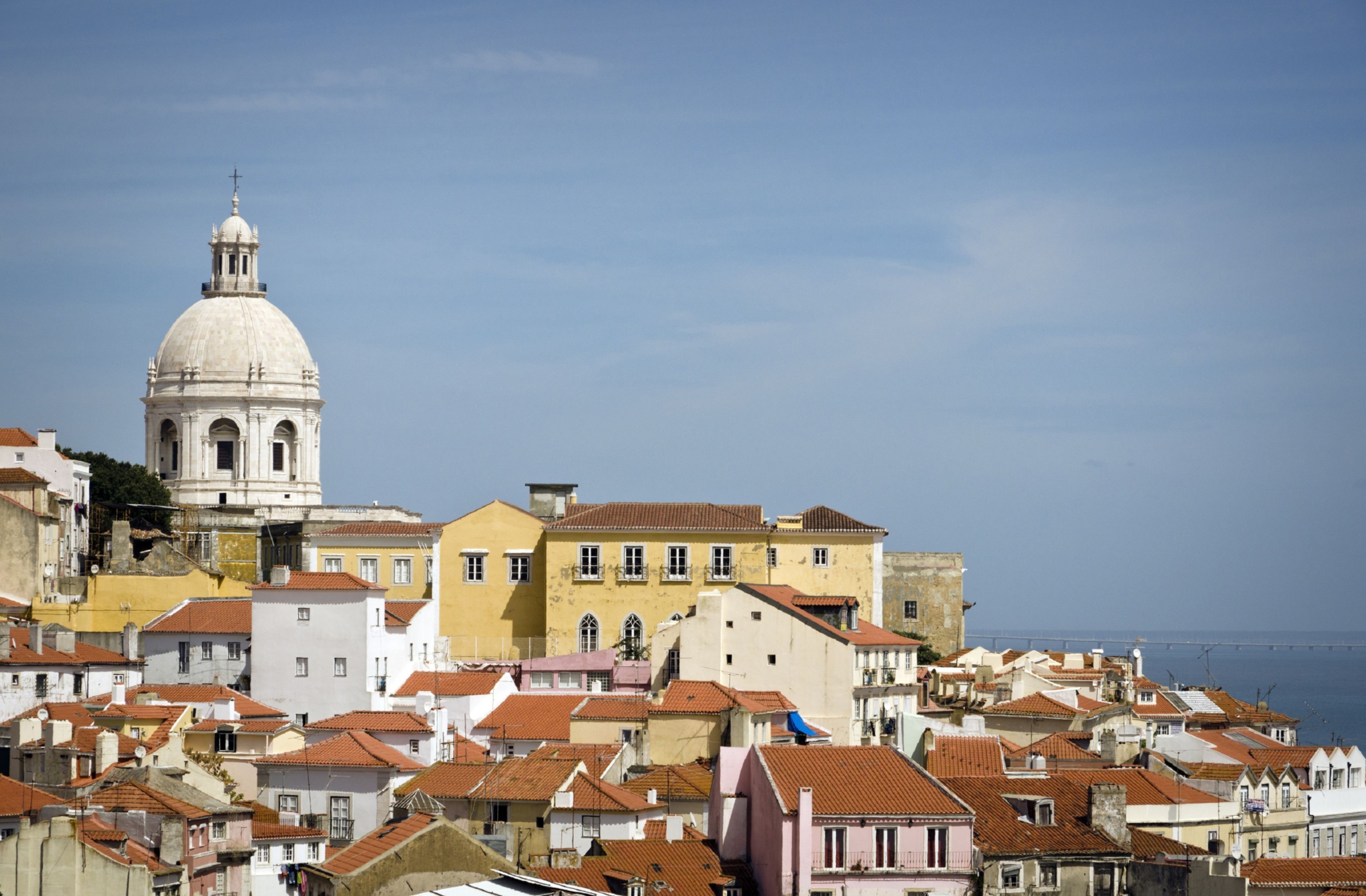Lisbon is an established favourite with holidaymakers, and Stewart Lloyd-Jones took a trip there to check out the Portuguese capital’s delights.
Lisbon is built on seven hills on the north shore of the river Tagus just as it transforms into a wide estuary.
From a distance, the city’s red-roofed buildings seem to jostle for position while each window reaches out for a view over the wide sweep of the always-busy river.
The sun’s reflection from a thousand panes of glass spreads light into every corner, earning Lisbon its nickname – the white city (a cidade branca).
As capitals go, Lisbon is fairly compact, with most of the older districts concentrated into a one-mile radius of its main square, Rossio.
While this might suggest it ought to be easy to explore on foot, you would do well to note that although the mosaic pavements typical of Portugal may be attractive to look at, they can be hard on the feet . . . and then there are the seven hills.
For the poorly-shod or the less energetic, Lisbon has an excellent and cheap public transport network that squeezes its way into even the most apparently inaccessible of locations.
No stay in Lisbon could be complete without a trip on one of the city’s lovingly-maintained, bright yellow Edwardian-era trams.
The most popular of these is the number 28, a regular lifeline route connecting the hilltop Graça district, overlooking the impressive St George’s Castle, with the rest of the city.
The best place to catch it is at the Largo de Camoes, which gives you a head start on the other tourists waiting a few stops down and provides an excuse to visit the very fashionable Chiado district and pause for refreshments at A Brasileira, where you can share a coffee with the poet Fernando Pessoa.
While there you should take the opportunity to make the small detour and visit the shaded Largo do Carmo and the convent that survived the 1755 earthquake and tsunami that destroyed much of the lower city.
Once on the tram grab a seat, open the window, ignore the youngsters hanging on outside, and enjoy the journey up towards the cathedral and on to the Largo das Portas do Sol with its terrace offering views over the Alfama rooftops.
The tram continues on through streets barely wider than itself, and where pedestrians are forced to press themselves into doorways to let it pass. After negotiating a few tight corners it begins its ascent to Graca, passing the Monastery of St Vincent-Outside-The-Walls, a 17th-century mannerist-style building housing the remains of several Portuguese monarchs.
Behind the monastery, in the shadow of the Pantheon, is Campo de Santa Clara, which every Tuesday and Saturday is home to the city’s flea market (Feira da Ladra).
As well as the usual bric-a-brac there are stalls at which it is possible to grab some real bargains especially for those willing to haggle almost all of the table linen in my house was bought there.
Not far from Portas do Sol is Châpito, a circus school with a reasonably-priced terrace restaurant, Resto, with magnificent views over the city, and a bar, Bârto, which prepares the best caipirinha in Lisbon.
The profits from the bar and restaurant, which open in the evening until late, subsidise the school, and many of the staff are students so don’t be surprised if there is a spontaneous outburst of juggling or if you find a clown sitting at the next table.
It is worth making the effort to catch the number 15 tram to Belém, Lisbon’s most historic district from where many of the voyages of discovery set sail, and to where the riches of the new world flowed into Portugal.
The historical importance of Belém is apparent in monuments such as the Jeronimos Monastery, the Belém Tower and the more recent monument to the discoveries and nearby colonial war memorial.
After all that walking, why not treat yourself to some sweet cinnamon-topped Belem custard pastries from the Fábrica de Pastéis de Belem? You know you deserve it.
Those who prefer a less historical experience could make their way to the Park of the Nations, the site of Expo ’98, which boasts a modern shopping centre, the largest aquarium in Europe and a cable car that affords wonderful views of the park and the 12km Vasco da Gama Bridge and which has a very good offering of cafes, bars and restaurants.
There are plenty of places within easy reach of Lisbon by public transport.
From the station at Cais do Sodré, you can catch a train to Estoril, the beach at Carcavelos and the wealthy seaside town of Cascais.
If palaces and gardens are more your thing, then from Rossio station get the train to Belas, for Queluz Palace, or Sintra, which boasts two palaces, a Moorish castle and its very own microclimate.
